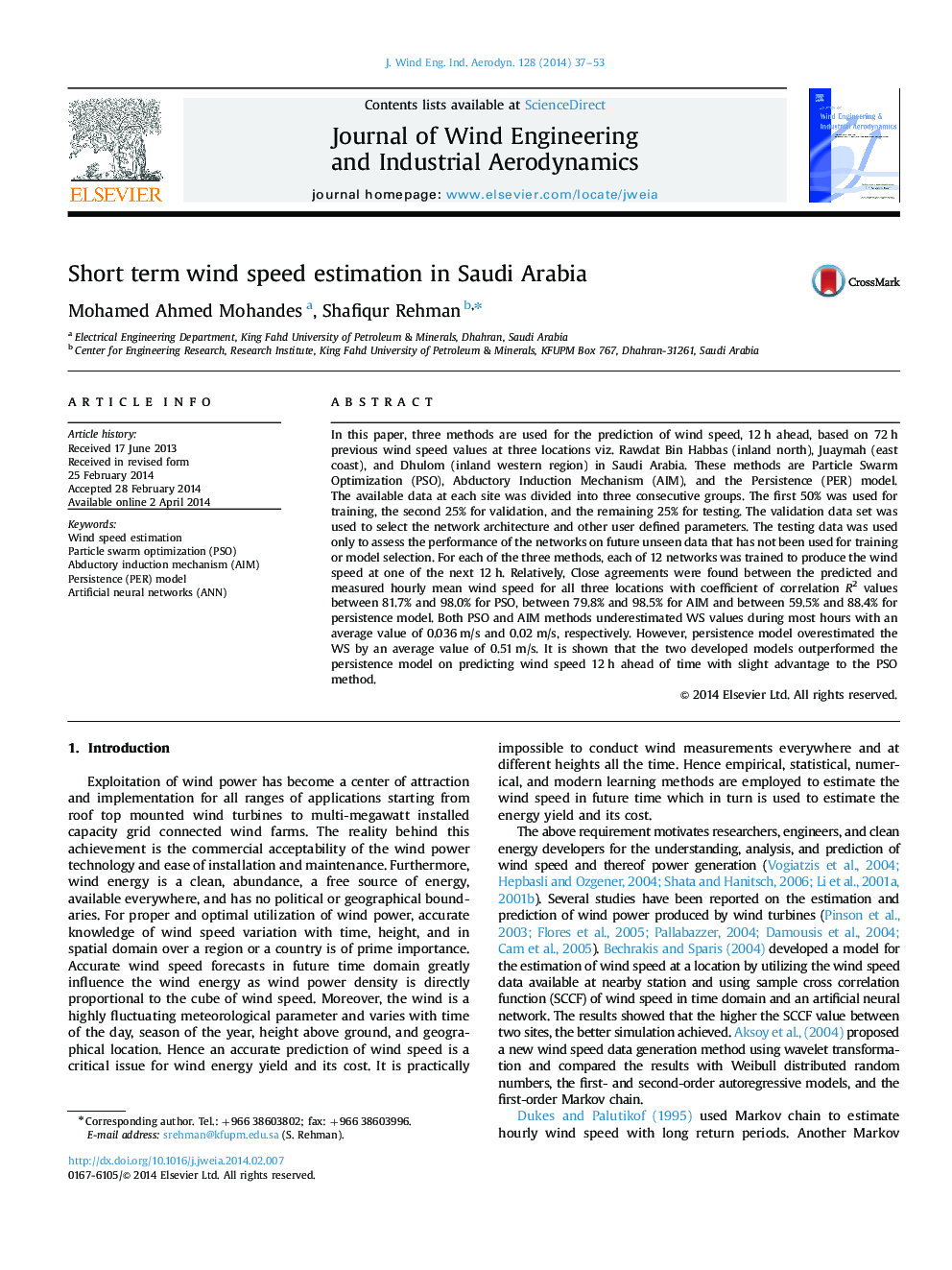| Article ID | Journal | Published Year | Pages | File Type |
|---|---|---|---|---|
| 293001 | Journal of Wind Engineering and Industrial Aerodynamics | 2014 | 17 Pages |
•Wind speed prediction ahead of time is critical from power supply point of view.•PSO, AIM, and Persistence models were used to predict the wind speed ahead of time.•Close agreements were found between predicted and measured values for PSO and AIM.•Both the methods were able to catch the fluctuating nature of the wind speed.•PSO method performed slightly better than the AIM method.
In this paper, three methods are used for the prediction of wind speed, 12 h ahead, based on 72 h previous wind speed values at three locations viz. Rawdat Bin Habbas (inland north), Juaymah (east coast), and Dhulom (inland western region) in Saudi Arabia. These methods are Particle Swarm Optimization (PSO), Abductory Induction Mechanism (AIM), and the Persistence (PER) model. The available data at each site was divided into three consecutive groups. The first 50% was used for training, the second 25% for validation, and the remaining 25% for testing. The validation data set was used to select the network architecture and other user defined parameters. The testing data was used only to assess the performance of the networks on future unseen data that has not been used for training or model selection. For each of the three methods, each of 12 networks was trained to produce the wind speed at one of the next 12 h. Relatively, Close agreements were found between the predicted and measured hourly mean wind speed for all three locations with coefficient of correlation R2 values between 81.7% and 98.0% for PSO, between 79.8% and 98.5% for AIM and between 59.5% and 88.4% for persistence model. Both PSO and AIM methods underestimated WS values during most hours with an average value of 0.036 m/s and 0.02 m/s, respectively. However, persistence model overestimated the WS by an average value of 0.51 m/s. It is shown that the two developed models outperformed the persistence model on predicting wind speed 12 h ahead of time with slight advantage to the PSO method.
Graphical abstractFigure optionsDownload full-size imageDownload as PowerPoint slide
